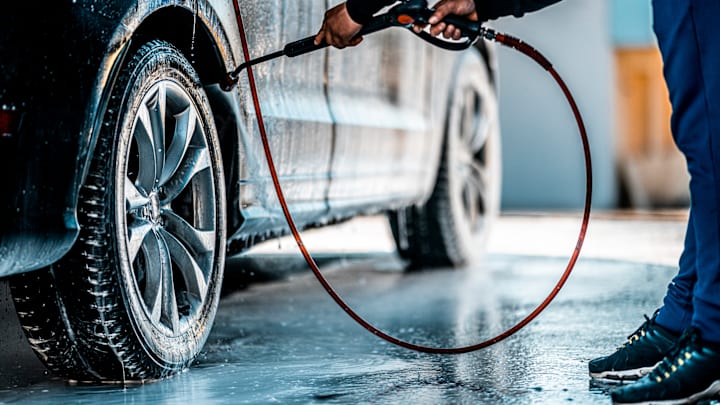Washing your car during winter may seem pointless because of all the ice, sleet, and snow that’s still falling outside, but it’s actually pretty necessary.
Harsh weather conditions can take a considerable toll on your vehicle’s exterior throughout the season. Road salt, which is often used to keep the roads clear, can also have a detrimental effect on your car. All told, these things can lead to everything from freezing to rust, which in turn may threaten the integrity of other vital parts of your vehicle, with brakes and fuel lines proving particularly susceptible.
Below, we break down why it’s important to keep washing your car through winter, plus how often you should do it and other essential things to keep in mind.
How Often Should You Wash Your Car During the Winter?
When it comes to winter car washes, your local climate and how often you drive need to be taken into account. If you’re driving every day, aim for a weekly wash to avoid sediment buildup. For less frequent drivers, biweekly or monthly washes should be sufficient.
Another factor to keep in mind is the temperature. Depending on how cold it is, it may be wise to push that scheduled hose down to a later—and somewhat warmer—date. Generally speaking, you want to avoid washing your car if the temperature is below 32°F. If the air is too cold, water could freeze over locks and door handles, making the whole process a lot more taxing.
Not only that, but road salt will stick to a wet car, so try to leave time for your vehicle to dry after the scrub down is over. Think of it as a good opportunity to park and catch up on a good podcast.
How to Wash Your Car in Cold Weather

Your car might not stay sparkling clean for long if you live in an area that’s prone to heavy snowfall. But if you want to save money and skip your local car wash, here are some good tips to keep in mind:
Dress Appropriately
Wear insulated and waterproof gloves to protect your hands from the cold. Waterproof, slip-resistant boots are also a solid choice for footwear, and be sure to layer on the clothing to keep warm.
Use Warm Water—and the Garage (If You Can)
Heat can easily expand small cracks in the glass to a shattering point, so never use boiling hot water to clean. In terms of where to do your own winter car wash, stick to the garage if you can. While it’s not always possible, cleaning your car in an indoor garage offers the most protection from the elements and ensures you’ll be a bit warmer doing it than you probably would be otherwise.
Don’t Neglect the Underbody—or Forget the Winter Wax
The underbody of your car is one of its least protected areas. Use a hose to spray underneath your vehicle, including on and around wheel wells, to remove salt and dirt buildup. Car wax specially made for winter use can also significantly bolster your vehicle’s defenses. It may even cut back on how often you need to clean the car.
Pay Special Attention to Windows, Locks, and Doors
Want to prevent windows from icing up post-wash? Start by rolling them down and leaving them open for a few minutes. After that, open the doors and wipe down all the rubber seals you see with a dry towel. Cleaning and maintaining door seals helps to keep a vehicle’s interior dry and supports the overall structural integrity.
Beyond windows, your locks and handles need special attention, too, as they might get frozen after a storm. Whatever you do, don’t panic. Instead, start your car remotely if you’re able to, then let it warm up. You can also use de-icing fluid from a spray bottle or blow warm air directly into the lock cylinder.
Read More About Cars:
